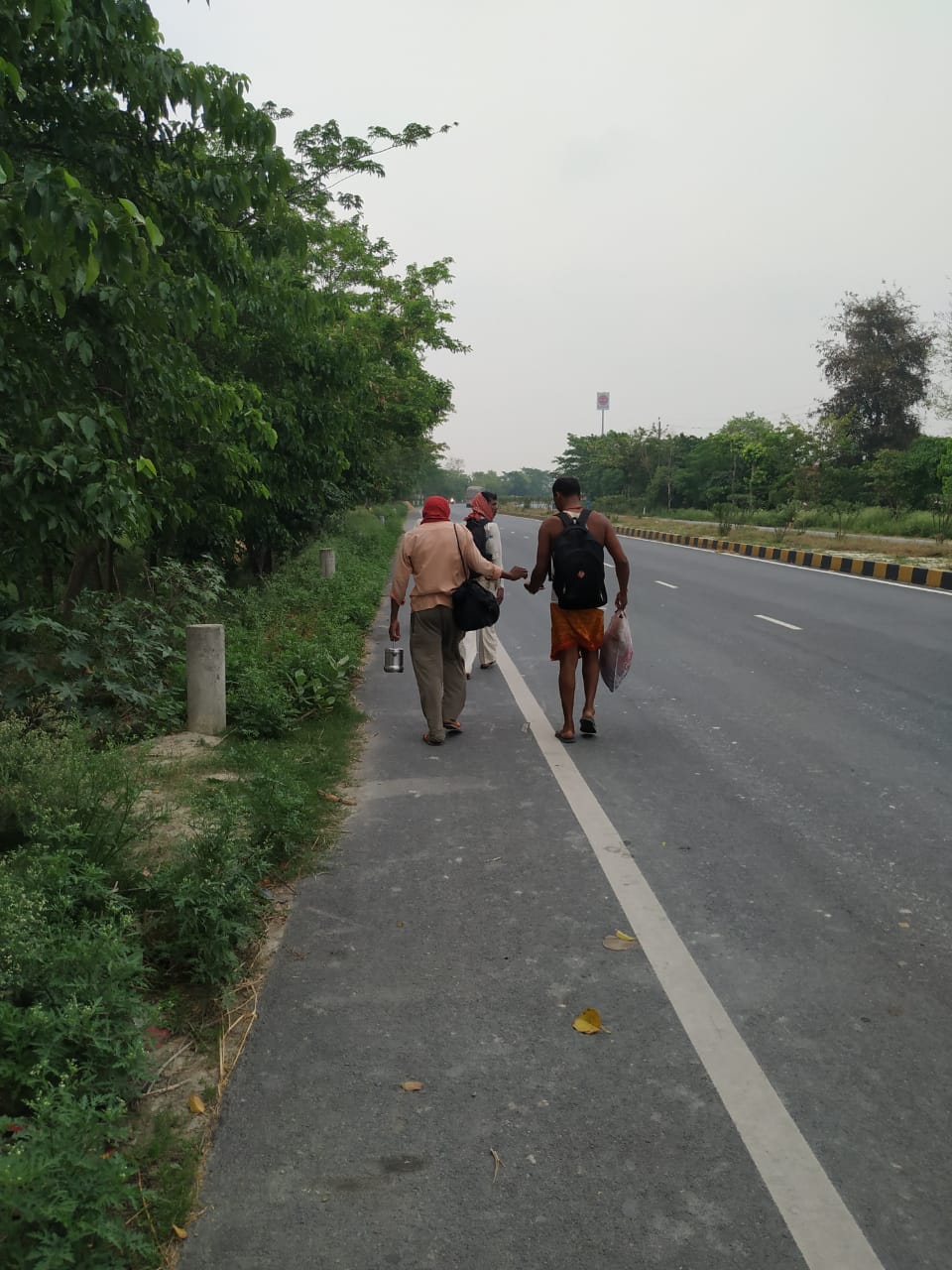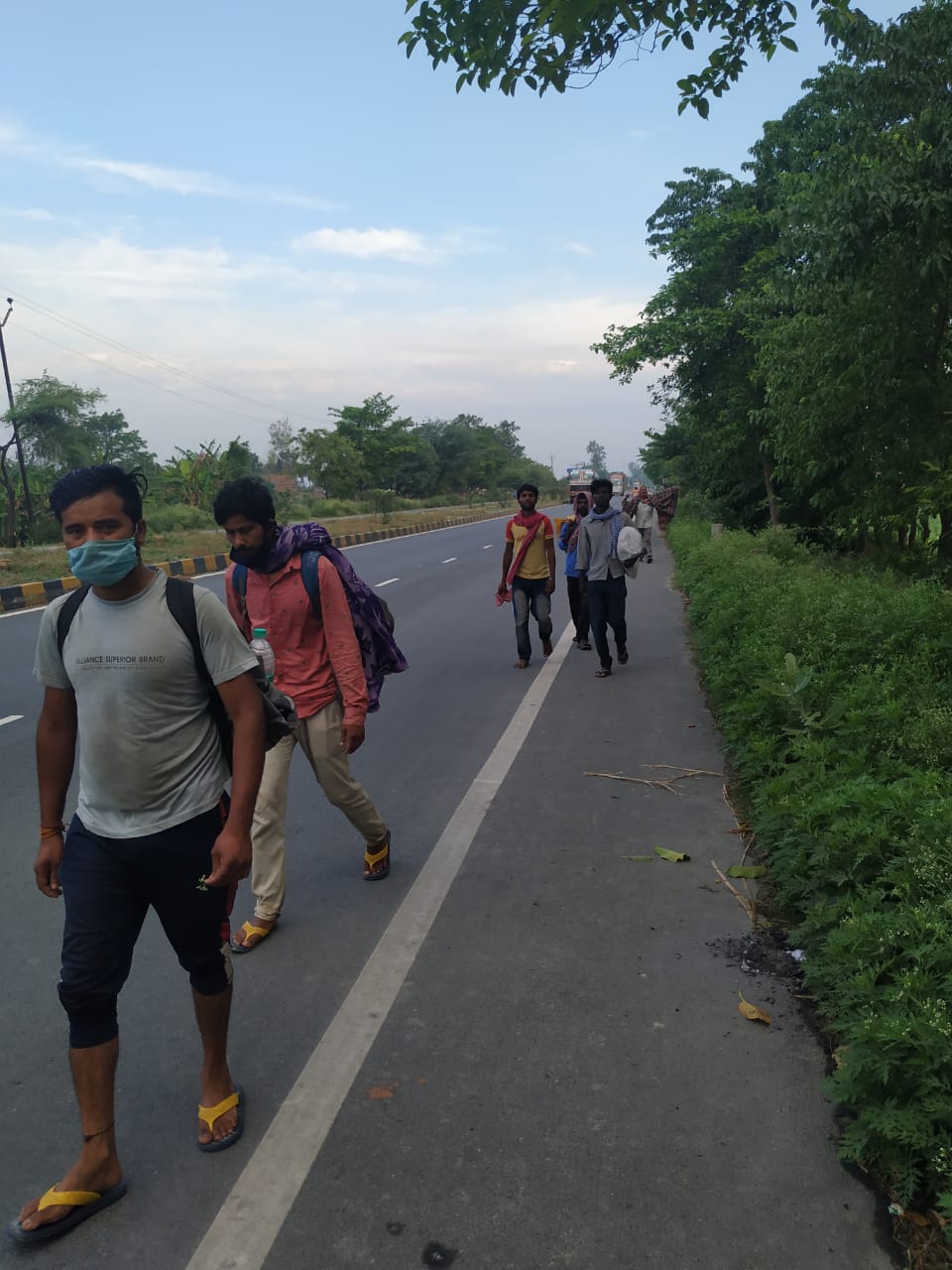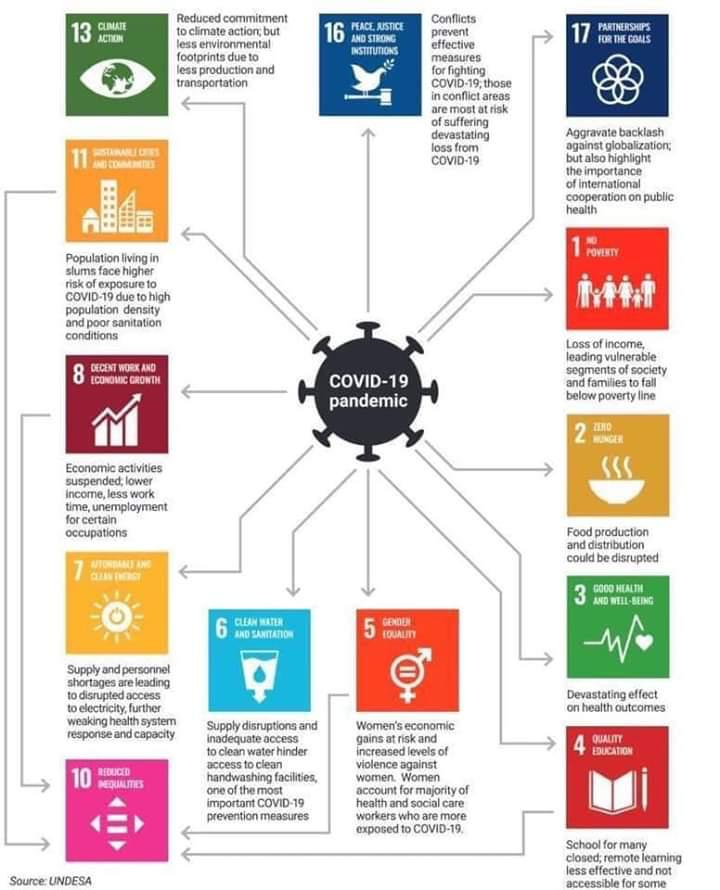Epidemics and the Vulnerable
Somewhere in India...
Manju has been walking straight for the last 3 days with a few short breaks. Trailing closely behind her with torn shoes is her two children, crying from hunger and pain. But she can’t afford to stop. She is one of the thousands of migrant labourers in India, stranded in a state away from their homes, with no jobs and shelter amidst lock-downs. This has caused a mass migration of informal workers across state borders, some of whom have miles to walk before they reach their native villages. Mira is no different, as she continues hurriedly, desperate to reach home before hunger kills her and her two children.


8000 miles away in USA...
Just across the globe in the outskirts of Louisiana lives George, a 42- year old with a family of four dependent on him. He used to work in a construction company until two days ago, when he received the news of him getting fired since the company, he worked for had to shut down. He is only one of the 10 million people in USA who have lost jobs within the last month due to the COVID19 Pandemic. With debts to pay and mouths to feed, he stares into an uncertain future. With the situation in USA worsening each day, it gives an indication to the vulnerability of the strongest economy in the world.
While Manju and George are in opposite parts of the world with vast difference in time and geography, what unites them is their lack of security, and their struggles against hunger and poverty. This is not just their story, but the story of millions of others, who continue to live in abject poverty, with no access to affordable healthcare or education. And these people are also the ones most vulnerable to epidemics like COVID-19, as research shows that that poor are hit the hardest.
Why the SDGs?
The world has been taken up in a storm for the last three months by a virus that has crossed geographical boundaries and reached faraway lands, after originating in the Chinese city of Wuhan. The deadly Corona Virus Disease (COVID-19) has infected 3 million people and claimed more than 211,789 lives in a matter of 100 days. While countries desperately try to fight against the spread of the disease, we must think ahead and understand why achieving the SDGs is absolutely imperative if we want to limit the repercussions of COVID-19 in the years to come and prevent disastrous impacts from other epidemics in the future.
17Goalsmagazin brings to you the 11 most important SDG measures for countries post COVID-19 phase.
1. SDG 1 (No Poverty): Stronger social schemes like Cash Transfers will prevent people from falling into poverty when an epidemic occurs.
2. SDG 2 (No Hunger): Access to adequate and nutritious food will improve health and strengthen the immune system against infections.
3. SDG 3 (Good Health and Well-being): Adequate number of beds, hospitals and healthcare workers are pre-requisites for a healthy and prepared economy.
4. SDG 4 (Quality Education): Without investment in education, research and innovation, future risks cannot be averted, especially for low income countries which depend on other countries even for test kits.
5. SDG 8 (Decent Work and Economic Growth): To prevent mass layoffs in times of crisis, schemes like Germany’s short time work or Kurzarbeit need to be adopted by countries.

6. SDG 9 (Industry, Innovation and Infrastructure): Industries and innovation in healthcare, or e-health to reach to remote villages should be expanded.
7. SDG 10 (Reduced Inequalities): COVID-19 shows epidemics do not care about richness and affects one and all. Global markets crash and inequalities deepen. Overseas Development Assistance (ODA) from the EU has seen a decline in the last years. This trend needs to be reversed.
8. SDG 11 (Sustainable Cities and Communities) and SDG12 (Responsible Consumption and Production): When communities depend less on exports and are self-sustained, countries suffer less during epidemics. This calls for increased investments in indigenous production and circular economies.
9. SDG 16 (Peace and Justice): Each country’s commitment to international peace must be reinforced and stronger commitments for human rights and equity must be made.
10. SDG 17 (Partnerships for the Goals): Bringing together ministries, bridging gaps between public and private sector and partnering for the Goals will lead to harmonised approaches to leaving no one behind.
Now more than ever, we realise how connected our lives are. A virus in China kills thousands in the USA. We cannot afford to remain oblivious anymore. Each Sustainable Development Goal has an important role to play in the fight for an equal, just and healthy world, and all the signatory countries have commitments to uphold. We are facing the largest epidemic the world has seen in 100 years and it is high time that we call for action. Let us demand better actions from our governments, mobilise resources to reach the SDGs and individually commit to do our part in achieving the 2030 Agenda.
Header Picture: By V Srinivasan on Unsplash



















